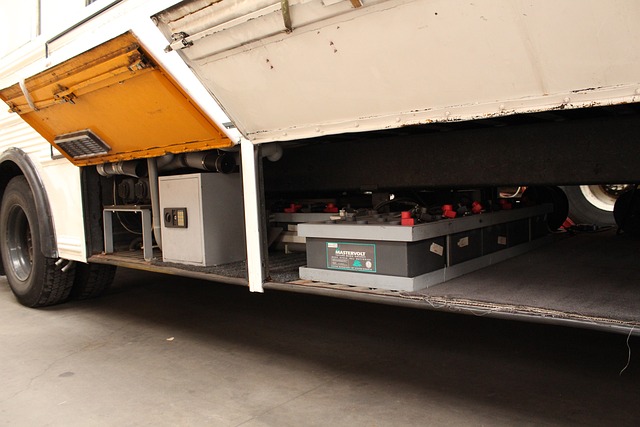Learn how to register your car in California effortlessly with our comprehensive guide. We’ll walk you through the entire process, starting with understanding the DMV’s VIN verification requirement for all vehicles. Discover what documents you need to bring, from proof of insurance to registration records.
Our step-by-step instructions cover everything, ensuring a smooth experience. Prepare to tackle common issues and post-registration tasks that will keep your vehicle legal and roadworthy.
- Understanding the DMV VIN Verification Process
- Gathering Necessary Documents for Car Registration
- Step-by-Step Guide to Registering Your Vehicle in California
- Common Issues During the Registration Process and How to Resolve Them
- Post-Registration: Important Steps and Considerations
Understanding the DMV VIN Verification Process

When registering a car in California, understanding the DMV’s Vehicle Identification Number (VIN) verification process is crucial. This involves verifying key information about your vehicle, such as its make, model, and year, to ensure it matches the data on record with the manufacturer. The DMV typically requires a valid title, registration, and proof of insurance before conducting this check using the unique VIN number etched into every vehicle.
One convenient way to streamline this process is through mobile VIN verification services. A mobile vin verifier or inspector can visit your location to perform the check, saving you time and effort by eliminating the need to visit a DMV office. This service ensures that all necessary details are accurately captured and submitted, making it easier to complete your car registration in California.
Gathering Necessary Documents for Car Registration

Before you start the registration process, it’s crucial to gather all the essential documents for car registration in California. The Department of Motor Vehicles (DMV) requires specific paperwork to ensure a smooth and accurate transaction. One critical step is to undergo a DMV VIN verification process, which involves checking your vehicle’s unique identification number (VIN). This can be done through traditional methods by visiting a local DMV office or, for added convenience, with a mobile VIN verifier—a service that allows you to complete the inspection remotely.
Along with the VIN verification, you’ll need to provide proof of ownership, such as a title document; valid identification, like a driver’s license; and current vehicle registration (if applicable). Ensuring you have these documents ready makes the registration process quicker and less stressful. Remember, accurate and up-to-date information is key to a successful car registration in California.
Step-by-Step Guide to Registering Your Vehicle in California

Registering a car in California involves several straightforward steps, including a crucial process known as DMV (Department of Motor Vehicles) VIN verification. Here’s your step-by-step guide to ensure a smooth registration experience:
1. Gather Required Documents: Before you begin, collect essential documents such as the title or purchase agreement for your vehicle, a valid driver’s license, proof of insurance, and any previous registration records if applicable. If you’re registering a new car, you’ll also need a Certificate of Origin from the dealer.
2. Complete Application Form: Head to your nearest DMV office and obtain the Vehicle Registration Application form. Fill it out accurately, providing detailed information about your vehicle, including its make, model, year, and unique VIN (Vehicle Identification Number). This is where the VIN inspection comes into play – ensure the VIN on your paperwork matches that of your car precisely for a successful verification. You can also choose to complete this process online if available in your area, further streamlining the registration.
3. Conduct a Mobile VIN Verification: For added convenience and accuracy, consider using a mobile vin verifier. These services allow you to obtain real-time VIN inspection results from the comfort of your home or on the go. A quick text message or app interaction can verify the vehicle’s history and ensure there are no outstanding issues, enhancing the entire registration process.
4. Submit Application and Fees: Once your form is complete and you’ve conducted a successful vin inspection, submit your application along with the required fees to the DMV. These fees cover various costs associated with registering your vehicle, including title processing and license plate issuance.
Common Issues During the Registration Process and How to Resolve Them

The registration process for a car in California can be straightforward, but it’s not without its common hurdles. One of the primary issues many drivers encounter is the DMV VIN verification step. This involves confirming the vehicle’s unique identifier, or Vehicle Identification Number (VIN), which is crucial for ensuring the car’s authenticity and history. If you face challenges during this stage, consider these solutions:
A faulty or unclear VIN might be the result of a damaged vehicle plate or incorrect entry on necessary forms. Double-check the VIN on your car’s registration documents and ensure it matches the one provided by the DMV. For mobile VIN inspection or verification, utilize reputable apps or services that can cross-reference the number with national databases, offering instant validation.
Post-Registration: Important Steps and Considerations

After successfully registering your vehicle with the California Department of Motor Vehicles (DMV), there are several important steps to ensure a smooth ownership experience. One crucial aspect is completing a DMV VIN verification, which confirms the vehicle’s identity and history. This process involves cross-referencing the Vehicle Identification Number (VIN) against national databases to uncover any hidden issues or past accidents.
Additionally, consider utilizing a mobile vin verifier for added convenience. These services allow you to perform a vin inspection remotely, ensuring peace of mind from the comfort of your home. By staying proactive and taking these measures, you can better protect your investment and be one step ahead in case of any future vehicle-related concerns.
Registering a car in California involves several steps, from understanding the DMV’s VIN verification process to gathering essential documents. By following our step-by-step guide and addressing common issues, you can ensure a smooth registration experience. Remember, proper documentation and adherence to procedures are key to avoiding delays. Once registered, stay informed about post-registration tasks for a seamless ownership journey.
